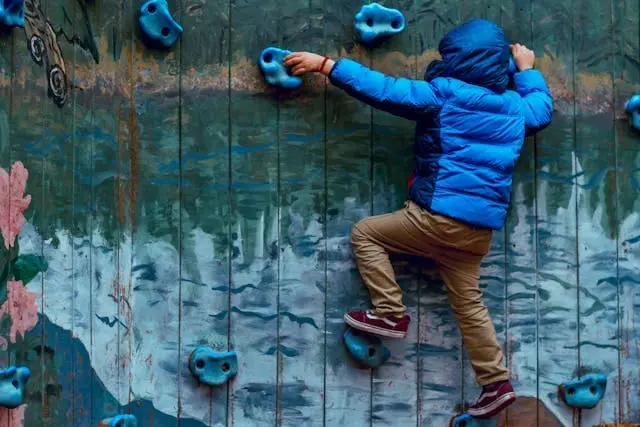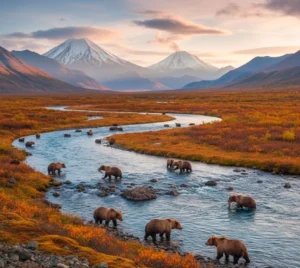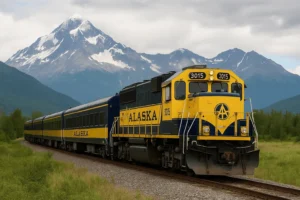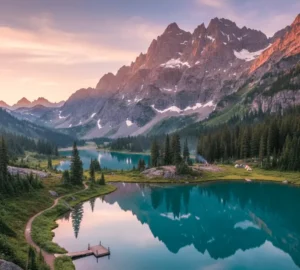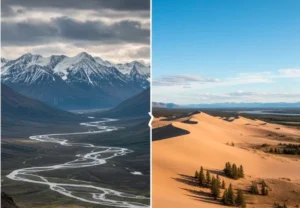Alaska, known as the “Last Frontier,” is a paradise for rock climbing enthusiasts. Its diverse landscapes, ranging from rugged mountain peaks to scenic granite crags, provide an exceptional backdrop for this exhilarating sport. Rock climbing in Alaska offers a unique blend of adventure and natural beauty, making it a must-visit destination for climbers of all levels. Whether you’re a seasoned climber seeking your next big challenge or a beginner eager to explore, Alaska’s top rock climbing spots have something for everyone. In this guide, we’ll highlight the five best places for rock climbing in Alaska, offering essential information, tips, and insights to help you plan your climbing adventure. Discover why Alaska is the ultimate rock climbing destination and how to climb rocks in Alaska.
Why Alaska is the Ultimate Rock Climbing Destination?
1. Variety of Climbing Opportunities:
Alaska offers numerous climbing options, from bolted sport routes to challenging alpine trad climbing. The terrain includes granite, limestone, and schist rock formations, giving climbers a wide range of experiences.
2. Access Challenges:
Many climbing areas in Alaska are hard to reach due to limited road infrastructure and remote locations. The short summer season and harsh winter weather also make climbing difficult.
3. Growing Climbing Community:
Despite the challenges, there is a dedicated climbing community in interior Alaska. Climbing gyms in Fairbanks are crucial in training new climbers, and local crags like Grapefruit Rocks provide quality sport and trad routes.
4. Stunning Scenery:
With its towering peaks, glaciers, and abundant wildlife, Alaska’s natural beauty creates a breathtaking backdrop for climbing. Guided climbing trips in areas like Skagway let climbers experience this unique environment.
5. Ultimate Climbing Destination:
While Alaska’s remoteness and harsh climate are significant obstacles, the state’s high-quality, diverse climbing terrain and awe-inspiring scenery make it an ultimate destination for adventurous rock climbers.
5 Best Places for Rock Climbing in Alaska
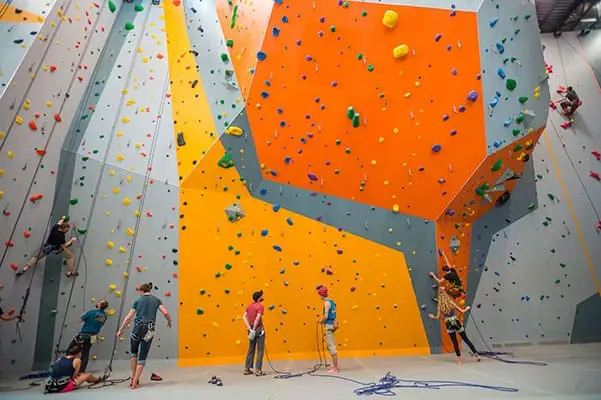
These top climbing spots in Alaska cater to various preferences and skill levels, from indoor gyms to scenic outdoor locations. Whether you’re looking for a controlled environment to practice or the adventure of climbing in the wild, Alaska offers diverse climbing experiences.
1. Alaska Rock Gym
- Address: 665 E 33rd Ave, Anchorage, AK 99503
- Rating: 4.7/5 (469 Reviews)
Alaska Rock Gym is the premier indoor rock climbing facility in Anchorage, boasting over 20,000 square feet of diverse climbing terrain. It caters to climbers of all levels, from beginners to experts, offering top-rope, lead climbing, and extensive bouldering areas. The gym is meticulously maintained, ensuring a high-quality climbing experience. In addition to climbing walls, it features a fitness area, a yoga studio, and locker rooms, providing a comprehensive fitness experience. While the gym is highly rated for its facilities, the staff’s friendliness can sometimes vary, but overall, it remains a top choice for indoor climbing enthusiasts in Alaska.
2. Rock Wall at University of Alaska Anchorage
- Address: 4101 University Dr, Anchorage, AK 99508
- Rating: 4.5/5 (2 Reviews)
The Rock Wall at the University of Alaska Anchorage offers a more minor yet solid indoor climbing experience. It provides a limited selection of routes, making it an excellent choice for students and local climbers seeking a convenient climbing option. Despite its size, it maintains a high climbing standard with well-set routes. The intimate environment allows for a more focused and personal climbing session, contrasting with the larger and busier commercial gyms. Its convenient location on the university campus makes it easily accessible for students and staff.
3. Hatcher Pass
- Location: About two hours north of Anchorage, past Wasilla
Hatcher Pass is a renowned outdoor climbing destination known for its large collection of developed granite routes. Climbers can find a variety of routes ranging from 5.5 to 5.13d, encompassing sport climbing, trad climbing, and bouldering. The area includes notable climbing spots like the Zulu Wall, Wishbone Wall, and Monolith for sport climbing, while the Crack Garden and Reed Lakes offer excellent trad climbing opportunities. The stunning alpine scenery adds to the climbing experience, making it a favorite among local and visiting climbers. Due to its high altitude, the weather can be unpredictable, so it’s advisable to climb early in the day to avoid afternoon showers.
4. Seward Highway
- Location: Along the Seward Highway, about 20 minutes south of Anchorage
The climbing areas along the Seward Highway offer single-pitch climbs with bolted routes and breathtaking views of Turnagain Arm and the surrounding glaciated peaks. Its proximity to Anchorage makes it an accessible option for climbers looking for a quick session. The routes range in difficulty, catering to a wide range of climbing skills. However, the rock quality can be chossy, requiring climbers to be cautious. Despite this, the scenic backdrop and various routes make it popular. Climbers should be prepared for rapidly changing weather conditions typical of the region.
5. Talkeetna Mountains
- Location: North of Anchorage, between the Matanuska and Susitna Valleys
The Talkeetna Mountains provide easy access to granite climbing with a range of moderate crack climbs. The Archangel Valley area is particularly notable for its shorter approaches and high-quality routes, making it a favorite among climbers seeking a combination of accessibility and challenge. The area offers a mix of climbing experiences set against the beautiful backdrop of the Talkeetna Mountains. The diverse climbing options, from beginner-friendly routes to more challenging ones, suit climbers of all levels. As always in Alaska, checking the weather beforehand ensures a safe and enjoyable climbing experience.
How to Climb Rocks in Alaska?
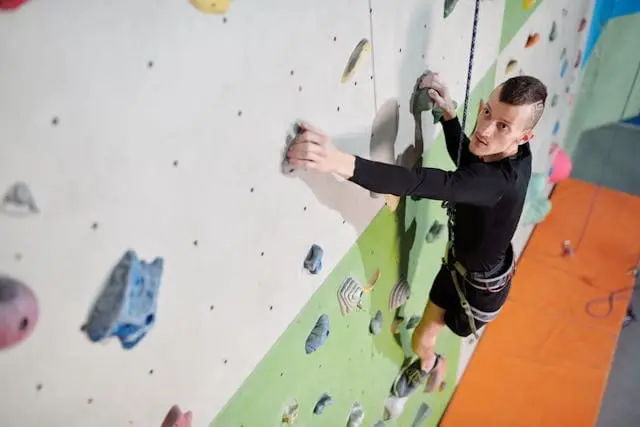
Rock climbing in Alaska is a thrilling experience, offering a mix of indoor and outdoor challenges against stunning natural backdrops. Here’s a guide to help you prepare and make the most of your rock climbing adventures in Alaska.
1. Gear Up
Essential Climbing Gear:
- Harness: Ensure it fits well and is comfortable.
- Climbing Shoes: Choose shoes that provide a good balance of comfort and performance.
- Helmet: Protects against falling debris and head injuries.
- Belay Device and Carabiners: Essential for safety in rope climbing.
- Ropes: Dynamic ropes for sport and trad climbing.
- Chalk and Chalk Bag: Keeps hands dry and improves grip.
Additional Gear for Trad Climbing:
- Camalots and Nuts: For placing protection in cracks.
- Quickdraws: For clipping into bolts or gear.
- Slings and Webbing: Useful for extending placements or building anchors.
2. Choose Your Climbing Area
Indoor Climbing:
- Alaska Rock Gym: Located in Anchorage, this gym has over 20,000 square feet of terrain and is perfect for year-round climbing.
- Rock Wall at the University of Alaska Anchorage: A smaller but solid option for indoor climbing.
Outdoor Climbing:
- Hatcher Pass: Offers a range of granite routes from 5.5 to 5.13d, suitable for sport, trad, and bouldering.
- Seward Highway: Features single-pitch climbs with stunning views, although the rock can be chossy.
- Talkeetna Mountains: Known for moderate crack climbs and accessible granite routes in the Archangel Valley.
3. Check the Weather
Alaska’s weather can be unpredictable, especially in mountainous areas. Always check the weather forecast before heading out. Morning climbs are often preferable to avoid afternoon showers and potential storms.
4. Learn the Techniques
Basic Climbing Techniques:
- Footwork: Precise foot placement is crucial for conserving energy and maintaining balance.
- Handholds: Use your hands for balance more than pulling. Look for natural features like cracks, edges, and pockets.
- Body Positioning: Keep your body close to the wall to maintain balance and reduce strain.
Advanced Techniques:
- Crack Climbing: Learn how to jam your hands, fingers, and feet into cracks for secure holds.
- Lead Climbing: Practice clipping quickdraws efficiently and managing rope drag.
- Trad Climbing: Understand how to place and remove gear safely.
5. Safety First
Basic Safety Tips:
- Partner Check: Always check each other’s gear before climbing.
- Communication: Use clear and consistent commands with your climbing partner.
- Belaying: Ensure you know how to belay properly and attentively.
Outdoor Safety Tips:
- Assess Routes: Evaluate the route and conditions before climbing.
- Weather Preparedness: Be ready for sudden weather changes; bring appropriate clothing and gear.
- Wildlife Awareness: Be aware of the local wildlife, including bears. Carry bear spray and know how to use it.
6. Get Local Knowledge
Guidebooks and Local Advice:
- Guidebooks: Invest in a good guidebook specific to the climbing area you’re visiting.
- Local Climbers: Connect with local climbing communities for the latest route information and conditions.
Guided Tours:
- Consider Hiring a Guide: A guide can provide valuable knowledge and ensure a safe climbing experience, especially if you’re new to the area or climbing.
7. Respect the Environment
Leave No Trace Principles:
- Pack Out Trash: Carry out all your trash and leave the area cleaner than you found.
- Minimize Impact: Stick to established trails and avoid damaging vegetation.
Respect Wildlife:
- Keep Distance: Observe wildlife from a distance and do not feed animals.
- Store Food Properly: Use bear-proof containers to store food and scented items.
Following these guidelines, you can enjoy a safe and exhilarating rock climbing experience in Alaska’s stunning landscapes.
Conclusion
Rock climbing in Alaska is a unique and thrilling experience that offers diverse challenges and stunning scenery. You can climb year-round with indoor options like the Alaska Rock Gym and the Rock Wall at the University of Alaska Anchorage. Outdoor spots like Hatcher Pass, Seward Highway, and the Talkeetna Mountains offer incredible routes for all skill levels. By gearing up properly, checking the weather, learning essential techniques, prioritizing safety, and respecting the environment, you can enjoy a safe and memorable climbing adventure in the Last Frontier. Alaska’s beauty and variety make it a top destination for climbers seeking adventure and natural splendor.
FAQs
Can you rock climb in Alaska?
Yes, Alaska offers a variety of indoor and outdoor rock climbing opportunities for all skill levels.
What is Alaska’s famous rock?
Alaska is famous for its granite, prevalent in popular climbing areas like Hatcher Pass.
Can I do rock climbing in southcentral Alaska?
Yes, Southcentral Alaska has excellent climbing spots, including Hatcher Pass and Seward Highway.
What safety precautions should be taken while climbing in Alaska?
When climbing in Alaska, check the weather forecast, use proper gear, perform partner checks, be aware of wildlife, and follow Leave No Trace principles.






